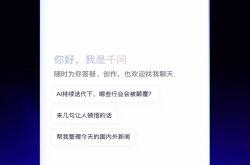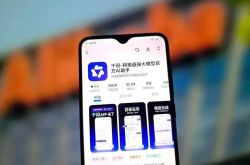iQIYI's Performance Shifts from Profit to Loss Amid Multiple Crises in the Long-Form Video Industry
![]() 11/19 2025
11/19 2025
![]() 510
510

Recently, iQIYI released its third-quarter financial report for the period ending September 30, 2025, showing total revenue of RMB 6.68 billion, an 8% year-on-year decline; a net loss attributable to the company of RMB 248.9 million, compared to a net profit of RMB 229.4 million in the same period of 2024. Calculated under non-GAAP U.S. standards, the adjusted net loss was RMB 148.2 million, shifting from profit to loss year-on-year.
In terms of revenue structure for the third quarter, iQIYI's membership service revenue was RMB 4.21 billion, up 3% sequentially but down 4% year-on-year, accounting for 63% of total revenue. Online advertising service revenue was RMB 1.24 billion, down 7% year-on-year; content distribution revenue was RMB 640 million, down 21% year-on-year; and other revenue was RMB 590 million, down 20% year-on-year.
iQIYI noted that the sequential growth in membership service revenue was primarily driven by new subscriber acquisitions from hit content such as
From Profit Myth to Loss Vortex: A Predicament
Once a trendsetter in the long-form video industry with hit series like
As the leader in the 'Youku, iQIYI, Tencent Video' triopoly of long-form video platforms, iQIYI is mired in triple dilemmas of content, advertising, and cash flow. iQIYI's revenue structure has long relied on three pillars: membership services, online advertising, and content distribution. However, in 2025, the collective decline of these three businesses became the primary cause of revenue contraction. The financial report attributed the decline to 'reduced content scheduling,' but the underlying contradiction lies in the persistent lack of hit content.
Taking membership services as an example, in the same period of 2024, iQIYI attracted a large number of paying users with hit series like
The diversion of user attention to short-video platforms has become increasingly pronounced. QuestMobile data shows that as of December 2024, China's short-video user base reached 1.04 billion, with a usage rate of 93.8%, while user time on long-form video platforms continues to be squeezed.
Under macroeconomic pressures, traditional advertisers in sectors like dairy and fast-moving consumer goods have cut budgets. Meanwhile, iQIYI's advertising products still rely mainly on traditional pre-roll ads and information feeds, lacking innovative forms such as AI-powered precision targeting and interactive ads, leading clients to shift to short-video platforms. In the second quarter of 2025, iQIYI's advertising revenue declined by 13% year-on-year, while Tencent Video and Youku also showed similar declines, indicating an industry-wide crisis of advertisers 'voting with their feet.'
To reverse losses, iQIYI initiated a 'cost reduction and efficiency enhancement' strategy in 2021, cutting costs through layoffs, reducing content purchases, and increasing the proportion of self-produced dramas. In the third quarter of 2025, the company's total costs were RMB 5.47 billion, down 3% year-on-year, with content costs at RMB 4.04 billion, down 8% year-on-year. However, this 'quantity-for-price' strategy has led to a decline in content quality, creating a negative cycle of 'cost cuts—reduced content—user attrition—revenue decline.'
Taking content distribution as an example, revenue from this business declined by 37% year-on-year in the second quarter of 2025, marking the largest historical drop. The financial report explained that reduced barter transactions and cash transactions reflect external clients' diminished willingness to pay for iQIYI's content, essentially due to insufficient content appeal.
Once a leader in licensing hit series like
Cash flow is the lifeblood of a business, and iQIYI's cash flow situation has raised red flags. In the third quarter of 2025, the company's net cash flow from operating activities was RMB 267.6 million, but free cash flow was negative RMB 290.3 million, a sharp decline from RMB 382.5 million in the same period of 2024.
As of September 30, iQIYI held only RMB 4.88 billion in cash, cash equivalents, and short-term investments, a 56% decrease from RMB 11 billion at the end of 2024. At the current rate of free cash flow consumption, the company's cash reserves may be depleted within the next two years. To alleviate financial pressures, iQIYI has accelerated its expansion into overseas markets and emerging sectors.
In the third quarter, the international version achieved a record high in daily average membership numbers, with membership revenue growing by over 40% year-on-year; revenue from micro-drama exports increased by 140% sequentially. Meanwhile, the company is advancing the construction of offline theme parks in Yangzhou, Kaifeng, and Beijing, with IP consumer goods revenue growing by over 100% year-on-year. However, these businesses are still in their early investment stages and are unlikely to contribute significant revenue in the short term.
The Long-Form Video Industry Is Mired in Multiple Crises
From iQIYI's three consecutive quarters of revenue decline and Tencent Video's sharp drop in paying members to Youku's dual setbacks in drama reputation and popularity, leading platforms are collectively trapped in dilemmas of user attrition, weak content, and profitability pressures. This crisis not only exposes long-standing structural contradictions within the industry but also reflects the impact of technological changes and shifting user habits on traditional models.
According to the
The direct cause of user attrition is the rise of short videos. As of June 2025, Hongguo Free Short Dramas had 210 million monthly active users, a 179% year-on-year increase; while the average episode playback volumes for head dramas on long-form video platforms during the summer season, such as
Content is the core competitiveness of long-form videos, but the industry is currently trapped in a cycle of 'content surplus yet scarcity of quality.' In the summer season of 2025, only six long-form dramas across all platforms surpassed 1 billion effective playbacks for their full episodes, a nearly 50% decrease from 2024; Cloud Synergy data shows that the top three dramas in effective playbacks for the first half of 2025—
Content homogenization is the primary issue. Historical romance dramas and urban suspense dramas still account for over 70% of all online dramas, with highly similar plot settings and character portrayals. For example, Tencent Video's heavily promoted
The profit models of long-form video platforms have long relied on advertising and membership fees, but both pillars face growth bottlenecks. In the third quarter of 2025, iQIYI's revenue was RMB 6.68 billion, down 8% year-on-year, with a net loss of RMB 248.9 million; while Tencent Video did not disclose specific data, the decline in paying members directly impacted membership revenue. The advertising market is also sluggish, with online video advertising market growth at single digits in 2023 due to macroeconomic pressures, showing no significant recovery in 2025.
To alleviate pressures, platforms have initiated 'cost reduction and efficiency enhancement' strategies: iQIYI reduced drama quantities through 'quality improvement and quantity reduction,' with a 4% year-on-year decrease in total episode counts for domestic dramas in the summer season of 2025; Tencent Video allocated 10-20% of its drama budgets to horizontal short drama development; and Youku established a micro-short drama center to fill content gaps with low-cost short dramas. However, cost reductions have not synchronize (Chinese term meaning 'simultaneously') improved efficiency, instead leading to a decline in content quality and creating a vicious cycle of 'reduced investment—user attrition—deteriorating profitability.'
Facing the crisis, long-form video platforms are accelerating their layout (Chinese term meaning 'strategic deployment') in short dramas and AI technology to explore new sectors. iQIYI launched 'Short Theater' and 'Micro Theater,' allocating over 70% of short drama revenue to content creators while providing free viewing rights to members; Tencent Video established an AI film and television expression studio to explore AI-assisted creation and distribution; and Youku launched the 'Thousand Quality Micro-Drama Plan' to double down on the short drama market.
The rise of short dramas has brought incremental growth to the industry, but their business model remains unproven. In 2024, the short drama market reached RMB 50 billion, surpassing box office revenue, and is projected to grow to RMB 91 billion by 2027. However, the market is highly concentrated, with 80% of traffic dominated by the top 5% of projects, requiring long-form video platforms to compete with short-video giants like Douyin and Kuaishou. Moreover, the 'fast-food' nature of short dramas struggles to meet the demand for in-depth storytelling inherent in long-form videos.
AI technology is seen as key to cost reduction and efficiency enhancement. iQIYI's trained AI large model has been applied to script polishing and scene construction, while Tencent Video experiments with AI-generated short films and spin-offs. However, the industry generally believes that AI can currently only assist in creation and cannot replace the core value of human creators, with its commercial applications still requiring time to mature.
The crisis in the long-form video industry essentially stems from a mismatch between user demand and supply models. In the era of attention economy, users' demand for 'good stories' has never disappeared, but long-form videos must find a balance between the traffic of short dramas and the depth of long dramas. With the triple pressures of short drama impact, AI revolution, and shifting user habits, platforms must adopt a more open mindset to embrace change and seek breakthroughs through content innovation and technological empowerment.








